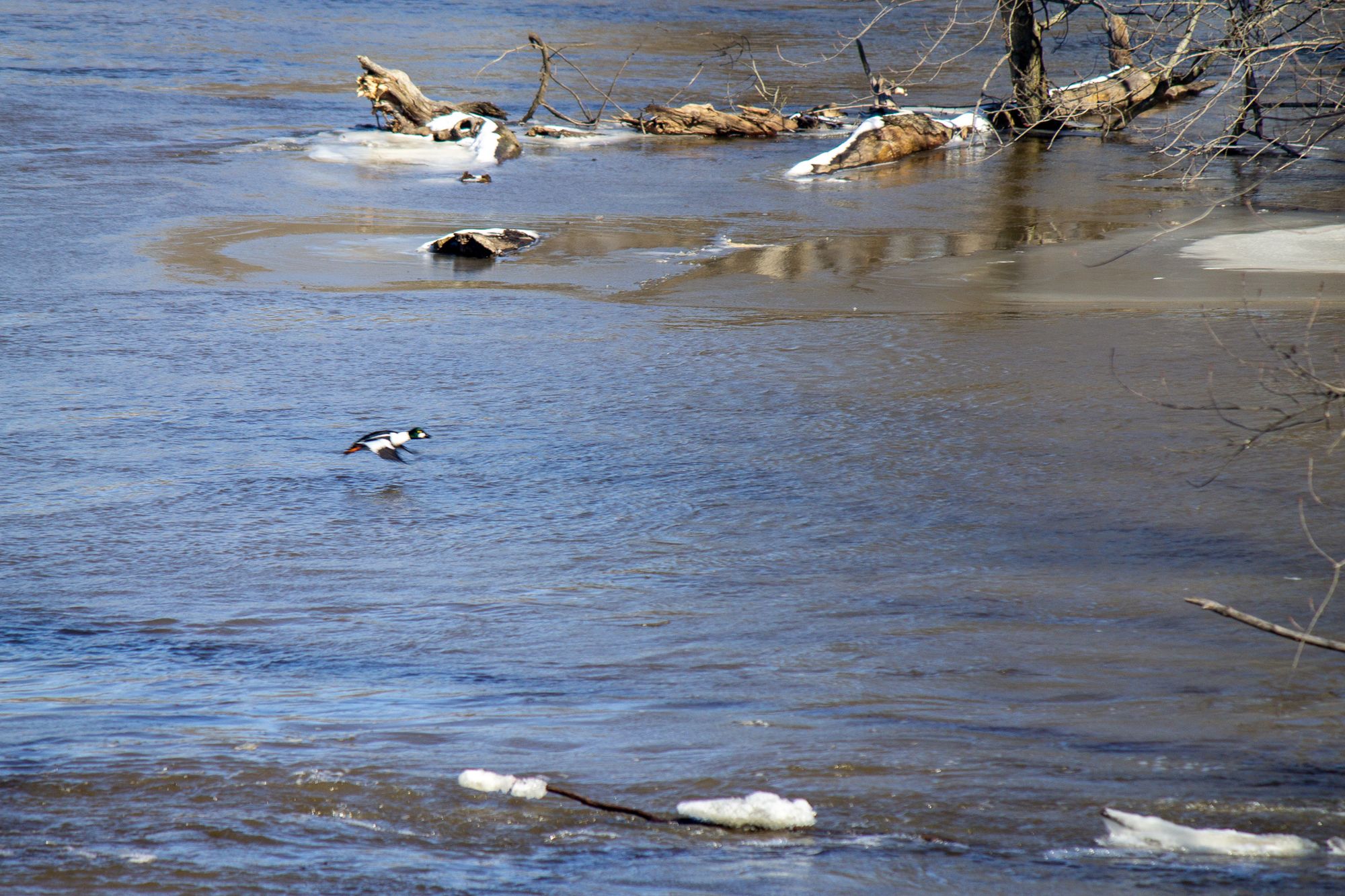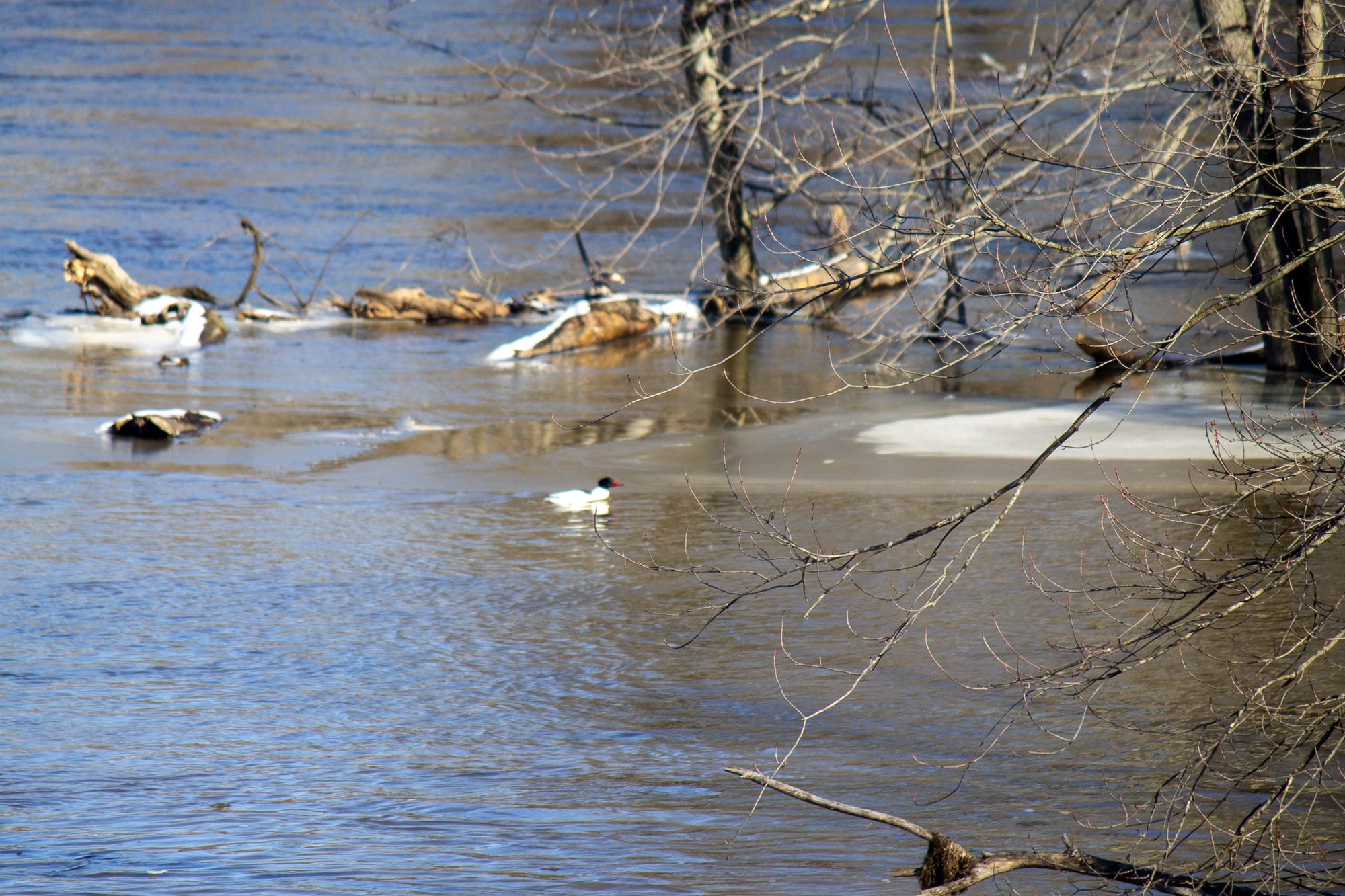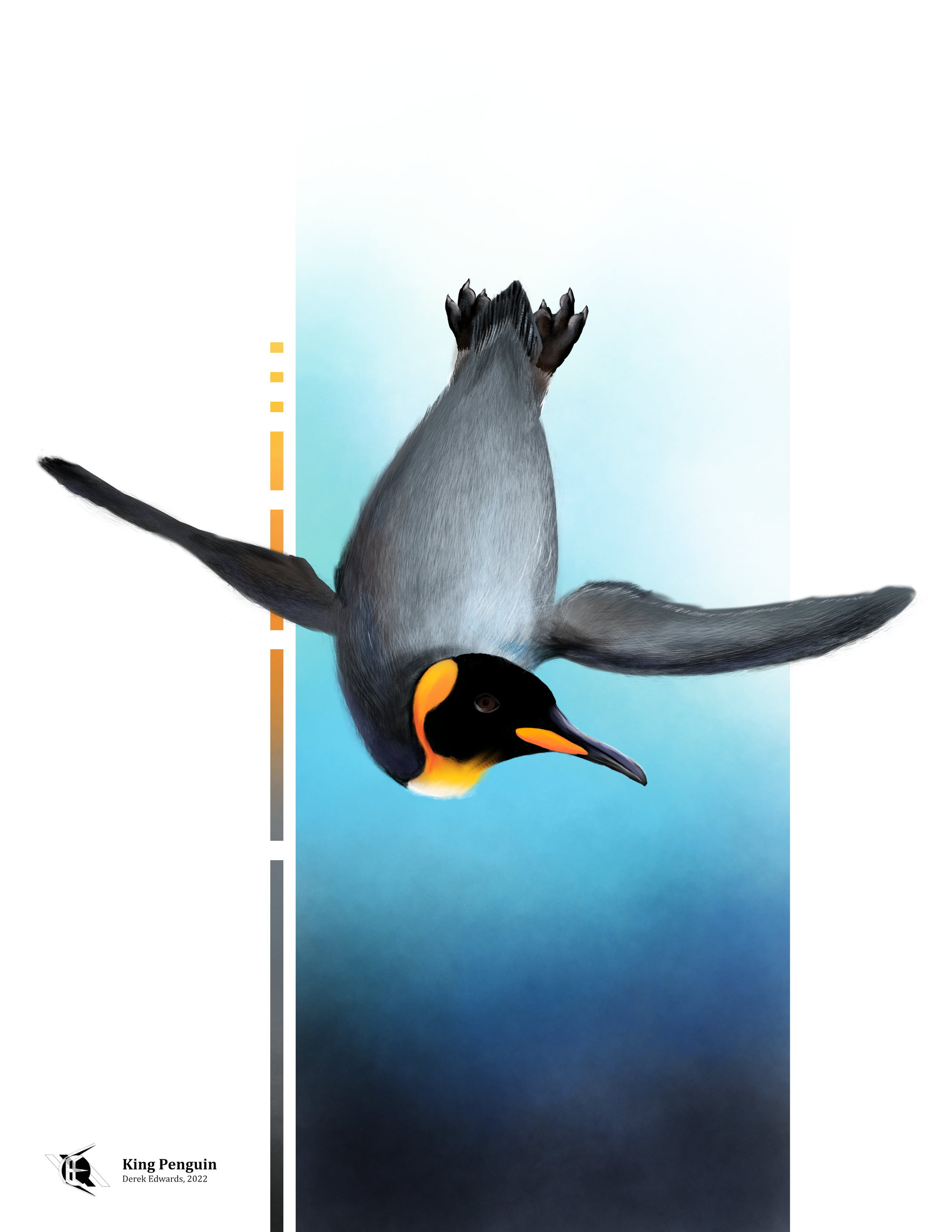
Running Commentary 2/21/2022
2/21/2022
Hello,
It’s been warm, and cold, and warm again. When it’s been warm, I’ve been out looking for ducks. I’ve found a stretch of river west of Lansing that a few common mergansers and goldeneyes have been hanging out in. They are some of the most skittish ducks I’ve ever seen. As soon as we come into view of each other, they take flight.


Still, it hasn’t been all bad. I got a few photos on one trip, and on another, I saw a beaver, which I’d never seen before.
Anyway...
Watching...
BattleBots
- BLOODSPORT v SUBZERO - Subzero had another tough fight, only able to get off one good toss of Bloodsport and losing partial drive control early on.
- COBALT v GHOST RAPTOR - This is how you use Cobalt. In the post-fight interview, driver Mike Lindberg mentioned not having much experience with a bot this aggressive in its setup, and that really showed in the last fight. Against Ghost Raptor, Lindberg went on the attack, eventually landing a catastrophic blow. Now, granted, Ghost Raptor might be the least resilient bot entered this season. As much as I like the spinner-on-an-arm weapon Ghost Raptor has, its overall design is really not up to the standards of the modern competition.
- ICEWAVE v DEADLIFT - Icewave swapped out their new weapon motor for their old one, and won the fight, though I’m not sure whether that was as much due to that change as it was to an opponent weak to Icewave’s strengths. Deadlift really had no chance against Icewave unless Icewave managed to knock itself out, which it didn’t.
- BLIP v OVERHAUL - Blip is my favorite of the new bots. Even despite some control issues they were able to keep clear of Overhaul’s grasper and keep Overhaul flying through the air until it broke. I will say, though, that Blip hasn’t faced anybody with a real, serious weapon yet. It’s small size should mean a chance for some thick armor, but their flipping mechanism is intricate and might not respond well to a high-energy impact.
- HUGE v RETROGRADE - After several losses, including that whole bike rack thing, Huge finally got a big win. Retrograde is aptly named, as it seems like a bot from 2017.
- COPPERHEAD v FUSION - This was a brutal fight. Even though it lost, Fusion made a good showing here. There’s no way that last season’s Fusion could have lasted as long as it did here.
- WHIPLASH v SKORPIOS - Skorpios swapped out their improved weapon module for their old one, which is better for self-righting. Unfortunately, the old weapon came with the old weapon failures. Neither bot delivered much damage, both bots exhibited a lot of aggression, so the split decision could be expected.
And let’s not forget the bonus fight: SWITCHBACK v SLAMMO!

Bird of the Week
This week we have a penguin. It’s almost hard to think of penguins as birds, but they are. They’re just very strange birds. A penguin is any of the dozen-and-a-half members of the order Sphenisciformes. While penguins are often most associated with Antarctica, only two species live there exclusively and only an additional three have part of their populations on the continent. Comparatively, there are six species native to Australia and New Zealand. The species featured today lives on islands in the southern reaches of the world’s oceans, including the Falkland islands (east of the southern tip of South America), the South Georgia islands (southeast of South America), the Prince Edward Islands (south of Africa, not to be confused with the similarly named Canadian province), the McDonald islands (southwest of Australia), and various other islands ringing the world just north of the Antarctic circle.
Penguins are most readily classified by their wings. Penguins are called “flightless”, and their wings certainly aren’t capable of lifting their pudgy bodies into the air. In the water, however, penguins can dart and swoop as well as any swallow. While other diving birds keep their wings folded in when under the water, penguins use theirs like fins or flippers, swimming with both arms and legs, if you will. A feature their wings share, strangely, with those of hummingbirds is the ability to generate locomotive power on both the up- and down-stroke. Their feathers are kept waterproofed by their uropygial gland, which releases a thick oil which penguins preen into their plumage. Another gland, located near their nostrils, excretes salt that the birds ingest while feeding on fish, squid, and other small forms of sea-life.
The king penguin is the second-largest penguin, behind its Antarctic cousin the emperor penguin. Like the emperor penguin, as well as the little penguin (the world’s smallest species) the king penguin’s back and flippers are covered in silvery feathers, not a penguin’s usual black plumage. Their bellies are white, to hide them from predators swimming below, and their ears and throat are shaded yellow and orange. When on land, they stand upright to a height roughly half that of an adult human, but they spend only a small amount of their lives on land. They go there to lay their eggs, which the parents hold on their feet, in shifts, for about two months. In total, the king penguin’s breeding cycle lasts for 15 months, the longest of any bird. They also go on land to molt old, wave-beaten feathers and grow in new ones.) Mostly, penguins are found at sea. King penguins will dive up to a thousand feet, staying underwater for five minutes at a time. They can swim as fast as 5 miles-per-hour. Chicks are sometimes eaten by skuas and petrels (large, gull-like birds) while adults are the prey of seals and orcas. Antarctic explorers used to eat king and other penguins while on their journeys, but this is no longer common practice.
The origin of the name “penguin” is a bit unclear. What is known is that “pinguinus” was given as the genus name for the now-extinct great auk, a flightless seabird of the north Atlantic, and, when Francis Drake discovered what we now call penguins off the coast of Cape Horn, they were named after the auk. Why the auk was called “penguin” is less clear. It could derive from the Welsh “pen gwyn” meaning “white head”, a reference either to the white patch on the greak auk’s face or because the auks were found on White Head Island, near Newfoundland. It could also be that “penguin” derived from “pinguis” a Latin work meaning “fat and juicy”.
One more note about king penguins: since 1972, a king penguin has held a rank in the Norwegian military. This all started when Nils Egelien, a member of the guard of King Olav V of Norway, while in Edinburgh for a military music festival, took a shine to the king penguins kept at the local zoo. He arranged for one to be inducted into the King’s Guard, naming the bird “Nils Olav” after himself and his king. Nils Olav was given the rank of lance corporal, and he was promoted each time the King’s Guard returned to Edinburgh. The original Nils Olav made sergeant before he died and was replaced by Nils Olav II, who made it to the rank of Colonel-in-Chief and was knighted before he, too, died, and was replaced by Nils Olav III. Visitors to the Edinburgh zoo can see a bronze statue of Nils Olav I as well as Sir Nils Olav III, who is presently a Brigadier.

Curation Links
The Great Dig | Lee Dugatkin, Areo
In the early days of the United States, there was a man named Charles Wilson Peale. He dug up mammoths.
Why Is It So Hard to Find a Good Floor Lamp? | Amanda Mull, The Atlantic
A Twitter rant inspires research into the dismal state of the modern floor lamp. Compared to other lighting options, floor lamps seem stalled at mid-century. It’s not just that designers don’t care. Floor lamps have a lot more engineering constraints than their cousins.
Portrait of a Scaphander | Brad Fox, The Public Domain Review
An experimental historical essay, largely focused on Emil Racoviță, a zoologist who served on the Antarctic exploration vessel Belgica, diving in a scaphander suit and discovering extremophile creatures, as well as keeping a diary recording the expedition and its harrowing effects on the crew.
Einstein-Rosen | Olga Osorio
[FICTION] [VIDEO] “Summer of 1982. Teo claims he has found a wormhole. His brother Óscar does not believe him - at least not for now.” It’s in Spanish, but there are English subtitles. (9 minutes)
See the full archive of curations on Notion

Member Commentary